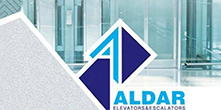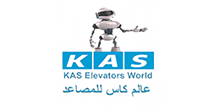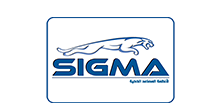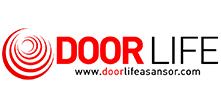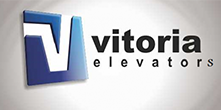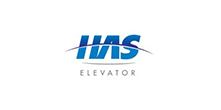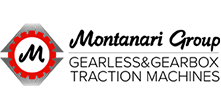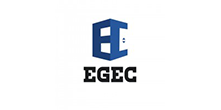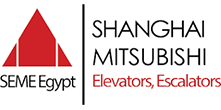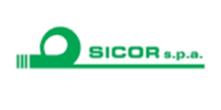
Login or create an account
CloseReturning Customer
I am a returning customer
Login or create an account
CloseRegister Account
If you already have an account with us, please login at the login form.
Your Account Has Been Created!
Thank you for registering with Egyptlifts!
You will be notified by e-mail once your account has been activated by the store owner.
If you have ANY questions about the operation of this online shop, please contact the store owner.
Account Logout
You have been logged off your account. It is now safe to leave the computer.
Your shopping cart has been saved, the items inside it will be restored whenever you log back into your account.
Elevator card
Elevator Card In the age of modern technology, security and efficiency have become an essential part of any facility, especially in multi-story buildings. Among the innovative systems that contribute to enhancing security and regulating movement within buildings is the elevator card. This advanced system controls access to elevators, ensuring that each user can only access the floors they are authorized to, providing comfort and safety at the same time. In this article, we will discuss how this system works, its advantages, and the importance of its use in modern buildings.
What is an Elevator Card?
An elevator card is an electronic card used to control access to elevators in multi-story buildings, whether residential or commercial. This card improves security and regulates passenger movement inside the elevator by determining which floors passengers can access based on their access rights.
Elevator card systems typically include a dedicated reader installed inside the elevator or on each floor of the building. When the card is swiped against the reader, the card's validity is verified, and if valid, the user is allowed to enter the elevator or access their assigned floor. The card can be magnetic or RFID (Radio Frequency Identification) enabled, allowing it to be used without touching the device, simply by swiping the card near the reader. This facilitates use and improves security inside the elevator.
Elevator Card Components
Card:
The card is usually made of plastic and contains a chip, magnetic stripe, or RFID technology to store information.
Types: The card can be magnetic, RFID-based, or even a smart card with a chip.
Reader (Card Reader):
The card reader is installed inside the elevator or on each floor.
The reader reads the data stored in the elevator card using magnetic or radio frequency identification (RFID) technologies to determine whether the card is valid and appropriate for access to the desired floor.
How an Elevator Card Works
An elevator card is a system used to control access to elevators within buildings. It relies on electronic technologies to determine user permissions. The system consists of a passenger card and a reader that reads the data stored on the card and determines whether the user is authorized to access the designated floors.
The process of interaction between the card and the elevator:
Card Use:
The user carries the elevator card, which contains specific information about their access rights, such as the floors they are allowed to access.
The user swipes the card against the designated reader.
Data Reading:
The card is scanned by the reader, which reads the information stored on it. This information may be a magnetic stripe or an electronic chip based on RFID (radio frequency identification) technology.
In the case of magnetic cards: The magnetic stripe is scanned on the device that reads the encrypted data.
In the case of smart cards or RFID cards: Data is sent and received via radio frequencies without the user having to touch the device.
Authority Verification:
After reading the data, the system verifies whether the permissions stored on the card allow the user to access the desired elevator or floor.
If the information is correct and the user's access permissions are appropriate, the user is allowed to access the elevator or the authorized floors.
Access to Authorized Floors:
If the card is valid, the system allows the user to access only the floors they are authorized to access. For example, residents of residential buildings may only be allowed to access their floors, while employees in commercial buildings are allowed to access certain floors.
If an attempt is made to access an unauthorized floor, the system rejects the attempt and the elevator is not allowed to be used.
Integration with Other Systems:
In some smart buildings, the elevator card can be integrated with other systems such as security systems, video surveillance, or energy management.
The elevator card can also be linked to payment or access control systems for added security.
Elevators are an essential part of modern urban life. Read on for more information.
Types of Elevator Cards
1. Magnetic Stripe Card
Technology: The magnetic stripe card relies on an embedded magnetic stripe containing encrypted data related to the user's access rights.
Mechanism of Operation: When the card is swiped through a reader, the device reads the data stored on the magnetic stripe, and then determines whether the user is allowed to access the specified floor.
Advantages:
Inexpensive: This is one of the simplest and most affordable options.
Ease of Use: The user only needs to swipe the card over the reader.
Disadvantages:
The magnetic stripe may deteriorate over time, leading to reading problems.
This system is not the most secure compared to other card types.
2. RFID (Radio Frequency Identification) Card
Technology: The RFID (Radio Frequency Identification) card relies on the use of radio waves to transfer data between the card and the reader, whereby information is transmitted over a short distance.
How it works: Data is read remotely from the card without having to touch the device, making access faster and more convenient.
Advantages:
Higher security: Provides greater security compared to magnetic cards because data cannot be easily duplicated.
Convenience and speed: The card can be read remotely without direct contact with the device.
Durability: This type of card is not as easily damaged as magnetic cards.
Disadvantages:
Higher manufacturing cost compared to magnetic cards.
3. Smart Card
Technology: The smart card contains an embedded electronic chip containing memory and a processing chip for storing more advanced data, such as access logs and encrypted data.
How it works: Communication between the electronic chip inside the card and the reading device occurs using contactless or contactless technology.
Advantages:
Highest level of security: It relies on advanced encryption technologies, making it more secure.
Extensive data storage: It can be used to store access logs and customize permissions in multiple ways.
Damage Resistant: Smart cards are more durable than magnetic and RFID cards.
Disadvantages:
Higher manufacturing costs than other cards.
Requires advanced readers to interact with them.
4. Biometric Card (Fingerprint)
Technology: This type of card relies on biometric technologies such as fingerprint or facial recognition as a means of verifying the user's identity.
Mechanism of Operation: When using the card, the user's identity is verified via biometric scanning of the fingerprint or face, and access is granted based on this data.
Advantages:
Highest level of security: The card evaluates the user's identity using unique technologies that ensure high security.
Immutability: Biometric data cannot be imitated or stolen.
Disadvantages:
High cost.
May require periodic hardware technology upgrades.
5. Dual Interface Card
Technology: This card has two interfaces: a magnetic interface and an RFID or smart interface, allowing the user to choose the most convenient method for interacting with the system.
Mechanism of Operation: The magnetic interface can be used to swipe the card on a magnetic reader, or the other interface, based on RFID technology or a smart card, can be used as needed.
Advantages:
Flexibility of Use: The elevator card can be used in multiple systems that integrate different technologies.
Future-Proof: It allows interaction with new systems in the future thanks to the variety of reading technologies.
Disadvantages:
The cost may be higher due to the integration of multiple technologies into a single card.
Here is some important information about: The Best Type of Elevator to Buy.
Uses of Elevator Cards in Modern Buildings
1. Controlling Access to Authorized Floors
In residential buildings: Elevator cards are used to ensure that residents only access the floors they live on. For example, residents can access their floors via elevator using their assigned card, while they are not permitted to access other floors.
In commercial buildings: Elevator cards can be assigned to employees, allowing them access to floors assigned to their offices or departments, while preventing access to unauthorized floors.
2. Increased security and privacy
Preventing unauthorized access: Elevator cards can ensure that unauthorized individuals cannot use elevators to access sensitive or restricted floors, such as administrative floors or floors containing confidential information or sensitive equipment.
In hotels: Elevator cards allow guests to access only the floors assigned to their rooms, enhancing privacy.
3. Visitor traffic management
In large commercial or residential buildings, elevator cards are used to regulate visitor traffic through elevators. Visitors with specific permissions can access elevators or floors assigned to them, but they cannot access restricted areas.
4. Integration with smart building systems
In modern buildings that rely on smart systems, elevator cards can be integrated with other systems such as elevator lighting, security systems, and climate control.
For example, the card may be linked to an energy control system to turn on the lighting and air conditioning in the elevator or on the floor where the user is located, thus contributing to energy savings.
5. Employee Access Management
In administrative and commercial buildings, elevator cards can be assigned to employees to enable them to access specific departments or floors. This allows for better management of upper-floor employees in companies or institutions, ensuring that unauthorized persons do not enter designated areas.
Advanced Security Technologies
In some modern buildings, elevator cards are integrated with biometric identification technologies such as fingerprint or facial recognition. This provides additional security, as users can pass through the elevator using a card with biometric authentication to verify their identity.
7. Traffic Statistics and Monitoring
The elevator card provides the ability to collect data on the movement of people inside elevators, such as elevator usage times and the most frequently visited floors. This helps improve elevator traffic management and regulate usage during peak times.
In larger buildings, this data can be used to analyze patterns and optimize maintenance.
The elevator card can be integrated with the system to ensure that only the designated personnel have access to these elevators.
9. Maintenance Management and Elevator Performance Improvement
Thanks to the integration of the elevator card with monitoring systems, modern systems can monitor elevator performance and provide proactive maintenance reports. Every elevator use is recorded, helping maintenance teams identify situations that may require maintenance or technical updates. Vertical transportation is a modern and efficient means of transporting people and goods between different building floors. Read about it to learn more about it.
Advantages of Using an Elevator Card
Improved Security:
Access Control: It is possible to determine who has access to different floors. For example, in residential or commercial buildings, unauthorized persons are prevented from accessing floors to which they are not authorized.
Protecting Sensitive Areas: An elevator card allows buildings to provide increased security for sensitive areas such as administrative floors or private facilities.
Convenience and Ease of Use:
Ease of Navigation: Users can quickly access their assigned floors without having to use traditional elevator buttons. Simply swipe the card to access the desired floor.
Reduced Congestion: Using an elevator card determines which floors are authorized for the user, reducing elevator congestion and contributing to improved organization.
Efficient Building Management:
Accurate Statistics: Data on elevator usage, such as the most frequently visited floors and the number of times the elevator is used, can be collected, helping to organize maintenance and improve system performance.
Improving User Experience: Providing customized options for residents or employees, such as quick access to their designated floors, contributes to a better user experience.
Integration with Other Building Systems:
Integration with Smart Systems: An elevator card can integrate with smart building systems, such as air conditioning, elevator lighting, and surveillance devices, to ensure user comfort and enhance security.
Customized Access:
Access permissions can be assigned to each individual in a building based on need (such as access to a specific floor in a company or hospital), enhancing security and privacy.
Read more reliable information that may be helpful to you about: The engineering, dimensions, and construction of elevators provide safe transportation for people.
Frequently Asked Questions
Can an elevator card open the elevator to all floors?
No, an elevator card only assigns the floors you are authorized to access. For example, in residential buildings, the card is assigned to residents, allowing them access to their floor only.
Conclusion
The elevator card is one of the modern innovations that significantly contributes to improving safety and regulating the movement of people within buildings. By providing a flexible and secure way to access designated floors, the elevator card enhances the user experience and contributes to enhanced security and privacy within elevators. Although there are some challenges related to technological systems and maintenance, the numerous benefits offered by the elevator card make it a preferred choice in modern buildings that require high levels of security and organization.
There are no products to list in this category.

